TeamLab Borderless in Tokyo: Thoughts on Why Some People Like It and Some Don’t
TeamLab seems to be included in almost every Tokyo itinerary we come across. Previously, we saw a TeamLab exhibit at the National Museum of Singapore, but it was nothing to write home about. This time, visiting Tokyo again in winter, we were looking for indoor activities and decided to check out TeamLab Borderless to see for ourselves what all the hype was about.
One thing to keep in mind is that opinions on TeamLab are quite divided as some people love it while others don’t, and we kinda see why after our visit. I myself had moments I genuinely enjoyed at TeamLab Borderless while Sophie didn’t like it, so you will see both perspectives in this post. The purpose is not to persuade you to visit or to dissuade you from going. Instead, I’m sharing my personal thoughts so you can determine if TeamLab experience may resonate with you.
Quick Links
- Locations: Google Maps (the museum is located in the basement of the building).
- Tickets: available on official website or through Klook.com.
A Good Concept
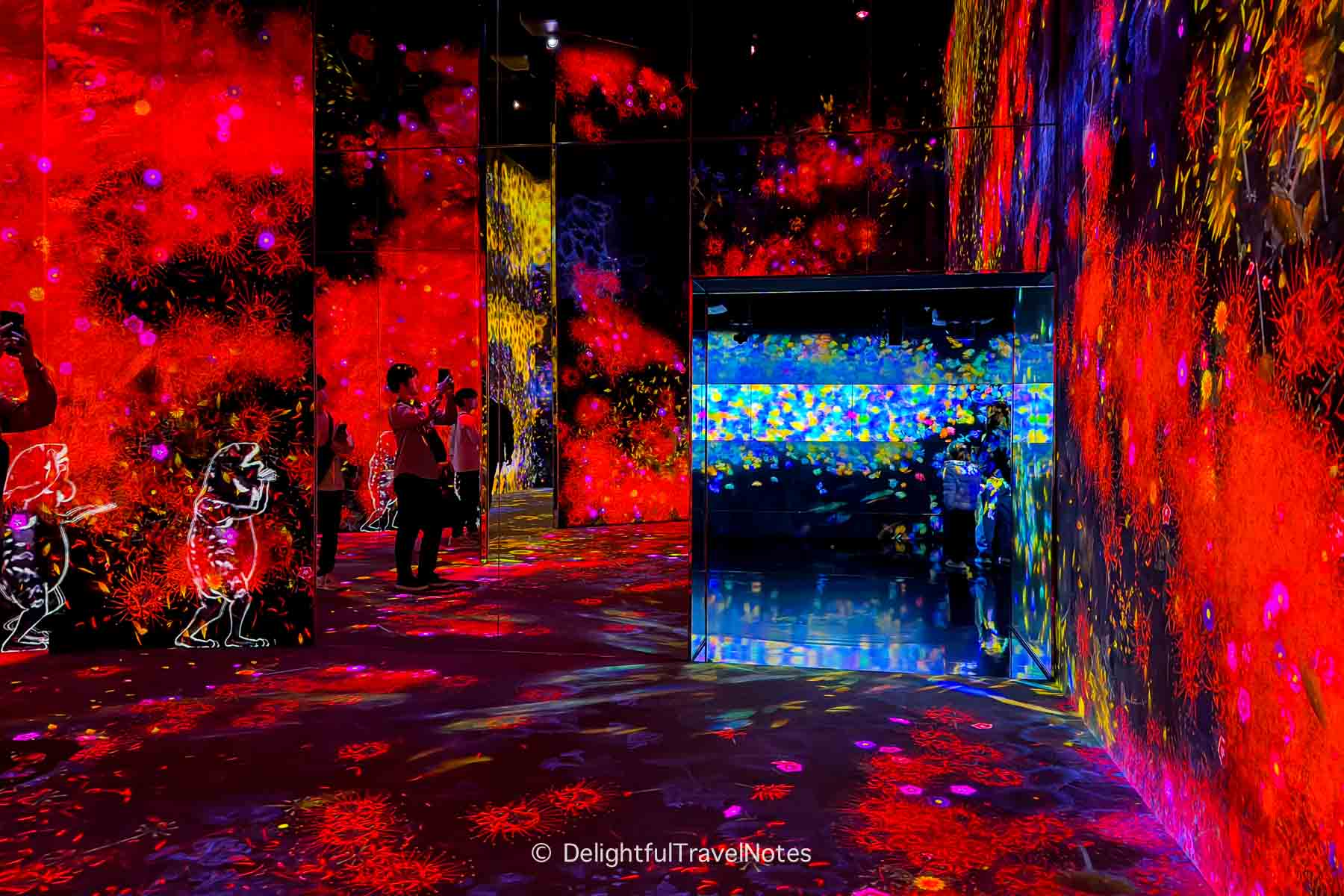
We went in completely blank, with little expectation and not even knowing what “borderless” meant. After scanning our tickets, we were shown a brief introduction on the screen mentioning that there was no map, no fixed path and visitors were free to explore the rooms in any particular order. So we thought this must be what they meant by “borderless.”
As we entered the exhibit, so much light illuminated the space, revealing vivid patterns projected everywhere, across the walls and floors. It was almost as if there were no defined edges, no physical boundaries – so this was probably another aspect of “borderless.”
One aspect I did not expect to encounter at the exhibit at all was Zen philosophy. I’m not sure if it was part of TeamLab Borderless’ original concept, but I could not help but recognize elements that resonated with Zen teachings.
My initial interest with Zen began several years ago when I learned about the underlying principles of Zen temple gardens and read books by Thich Nhat Hanh, a prominent Vietnamese Zen Buddhist. Since then, it has influenced how I perceive the everyday world around me, including art. After wandering through the first few rooms, I recognized two key Zen-inspired ideas woven into the experience:
- The interconnected nature of all things: nothing exists independently or permanently on its own. Everything arises in interdependence with everything else, forming an interconnected network, and thus, a borderless world.
- The interplay between the ephemeral and the eternal: ephemeral means constant change while there is an underlying eternal foundation and everything follows the cycle of life and death. Understanding this brings empathy and acceptance when seeing the world, which is central to Zen practice.
These ideas became apparent to me early on. In one of the first rooms, flowers bud, grow, bloom, and wither, their petals scattering before the cycle repeats. Their appearance, disappearance, and reappearance illustrate how we may view life’s events, whether they bring joys or hardships which all come and go. Watching this artwork, I suddenly had a moment of calm, which was a contrast to the chaos I just experienced the day before, when I had to work with my team urgently to resolve a severe product incident, even during our national holidays and vacations in Japan.
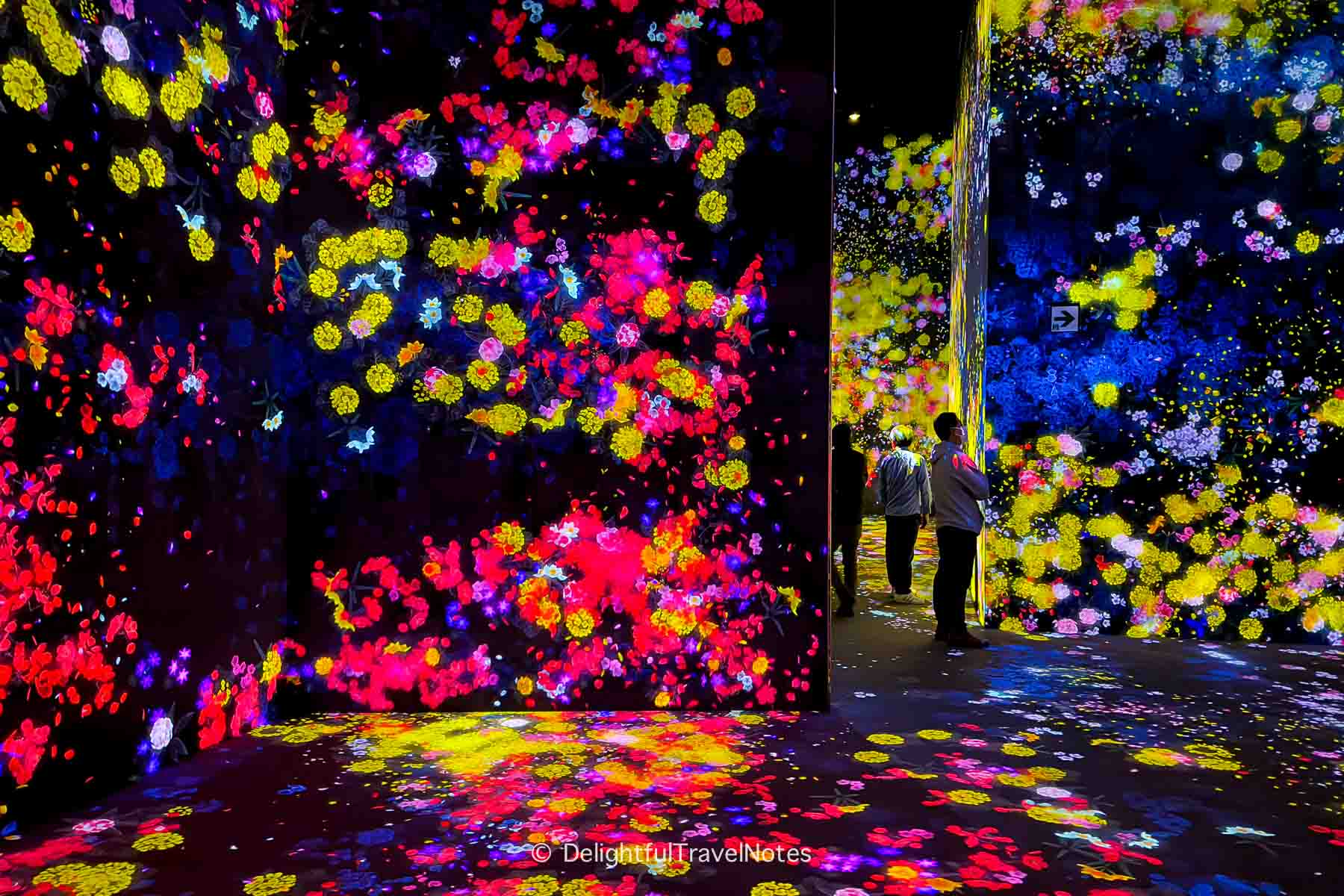
Throughout the exhibit, the artwork flowed seamlessly from one space to another which seems to mirroring Zen teachings about how everything is in continuous interaction in life. Additionally, you will notice that the interaction between visitors and the installation may cause change in the artwork. I think the interactive nature of the artwork is undoubtedly a highlight of TeamLab. As an engineer, I guess they use a combination of motion sensors and artificial intelligence to detect visitors’ gestures and adjust the environment accordingly.
Let’s take the flowers artwork for example again. The flowers may shed their petals and wither if people touch or step on them. TeamLab said the picture one took at a moment would never be seen again. That’s the repeated theme of interconnection and impermanence.
Execution Could Be Better
Though the concept was interesting to me, the execution was far from perfect. Our first disappointment was the quality of the digital projections. I expected sharp, crisp, high-definition visuals, but instead, they appeared somewhat blurry and pixelated.
Certain rooms, especially the Infinite Crystal Universe, feature intense, flashing lights that can fatigue more sensitive visitors. Sophie was uncomfortable in those dark rooms with sharp, bright lighting, and I myself found the environment overwhelming at times. The overstimulation can drain one’s energy, making it hard for us to remain there for too long.
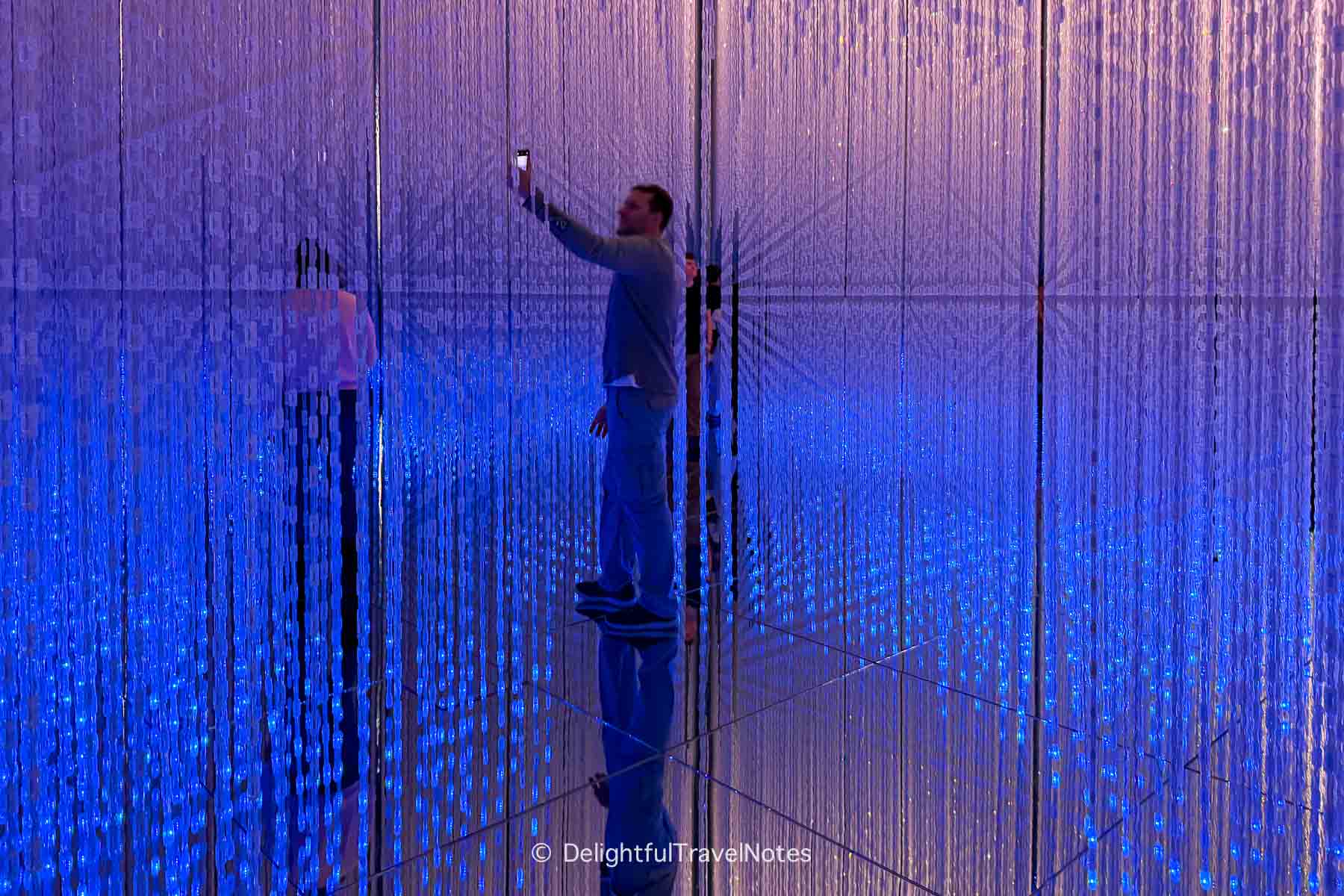
We were also not fans of the ambient music. Combined with the constant flashes of light and ceaseless motion in the digital projections, it began to feel pretentious and superficial after a while, more like a gimmick than an artistic experience. The amount of visitors also added more to this feeling.
We would certainly enjoy the exhibits more if it incorporated more distinct elements of Japanese culture. Some references to Zen gardens, temples, or even traditional Japanese performances could have given it a stronger sense of local identity.
Additionally, there’s limitation to digital art in confined space. After all, the themes of interconnection, eternal and ephemeral, which TeamLab seems to attempt to convey, are much better observed in Japan’s natural landscapes. Think about cherry blossom, bloom so beautifully, only to shed their petals in a fleeting yet poetic moment. The sight of petals scattering in the wind are both breathtaking and heartbreaking. We know spring will return next year, and flowers will bloom again, but these bittersweet, profound emotions can’t be helped in this moment. For us, the digital projections at TeamLab simply cannot bring the same emotions.
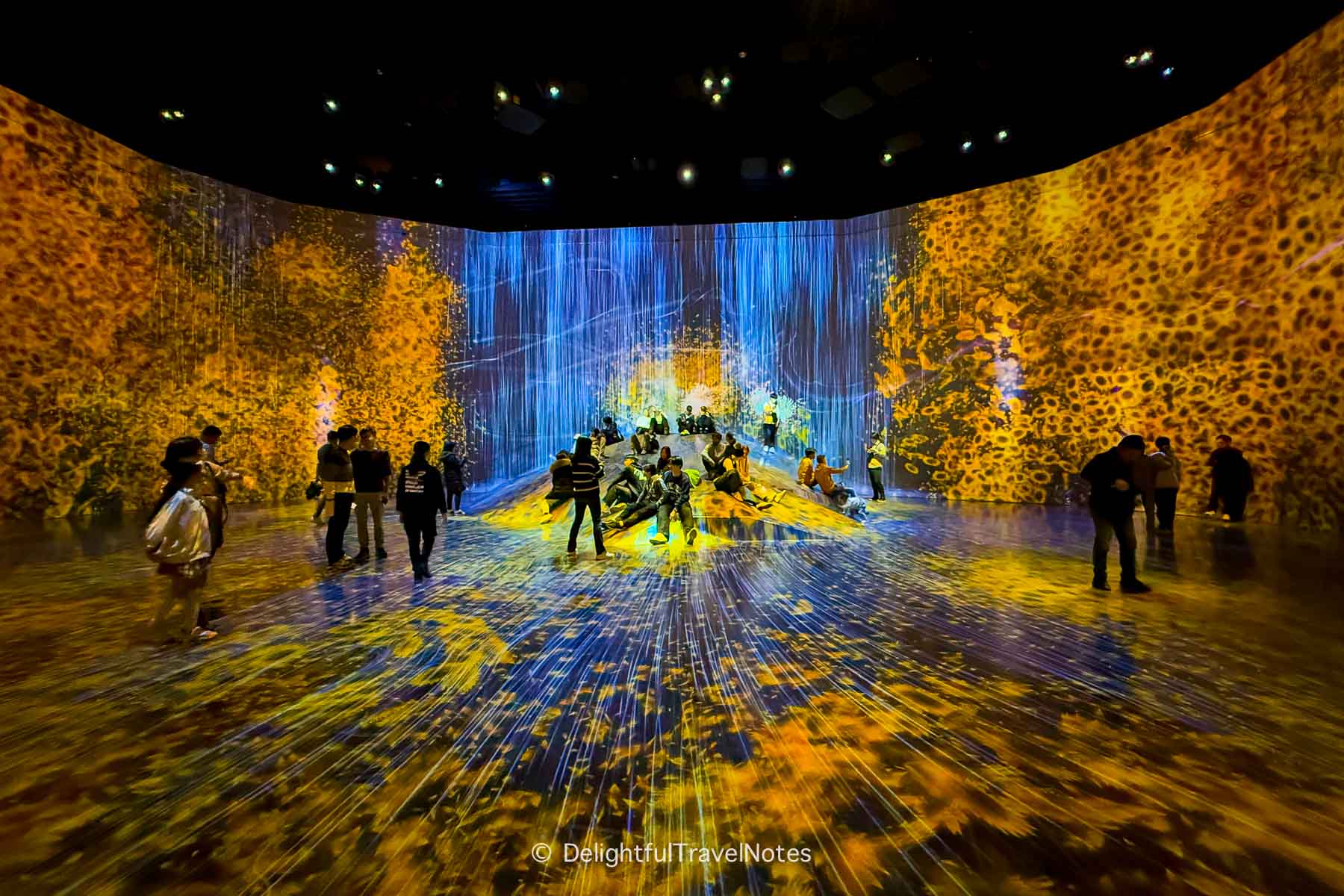
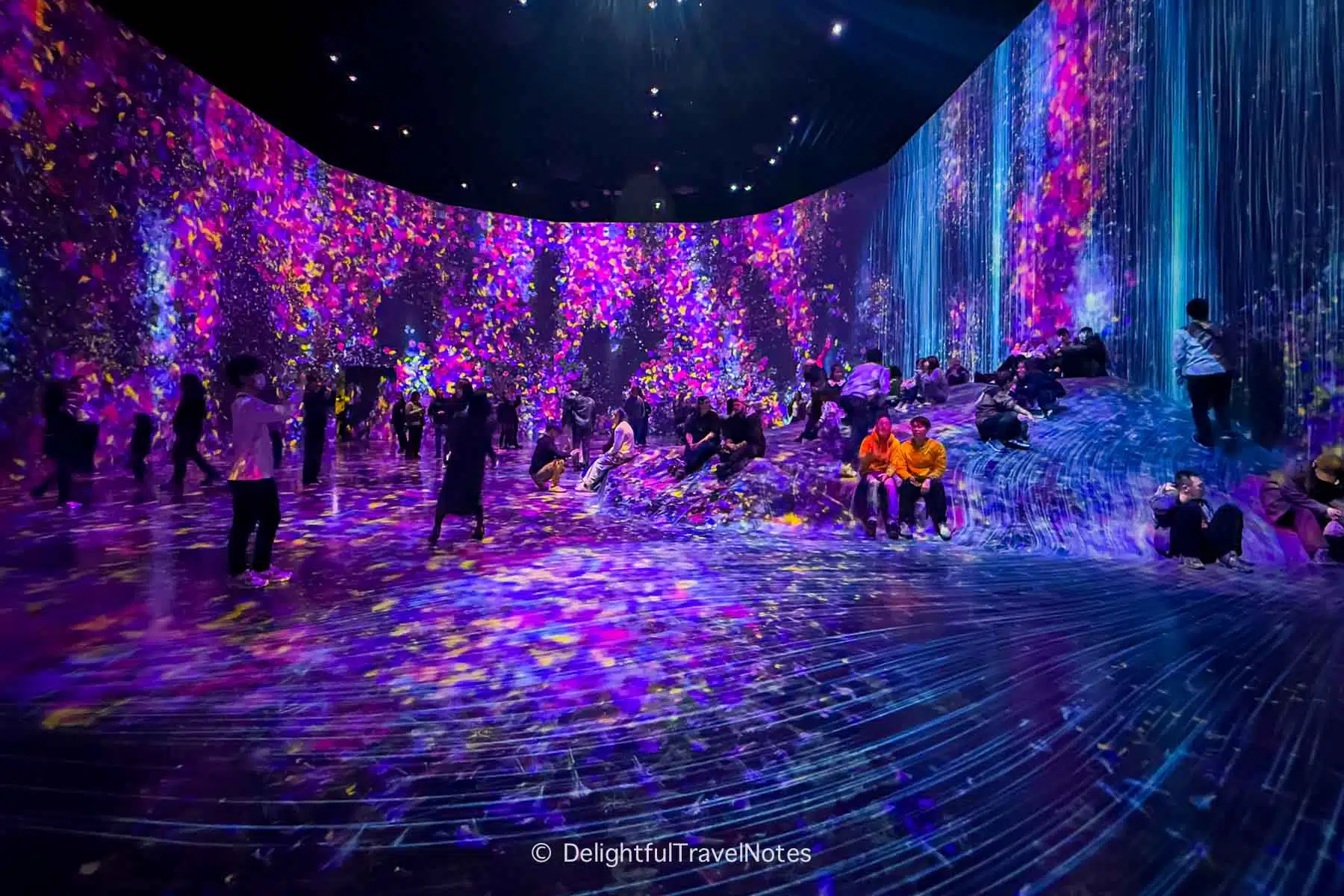
Visiting Tips
In general, we think if you have time to spare, it is not a bad idea to give TeamLab Borderless in Tokyo a try to see how you personally feel about it. We just don’t suggest prioritizing TeamLab at the top of your itinerary. We wouldn’t call it a must in Tokyo either.
Art is subjective, especially modern digital art. Some may find deep connections in its themes, while others may see it as nothing more than a giant screensaver or an Instagram backdrop. I think both perspectives are valid, ultimately, your experience is what you make of it.
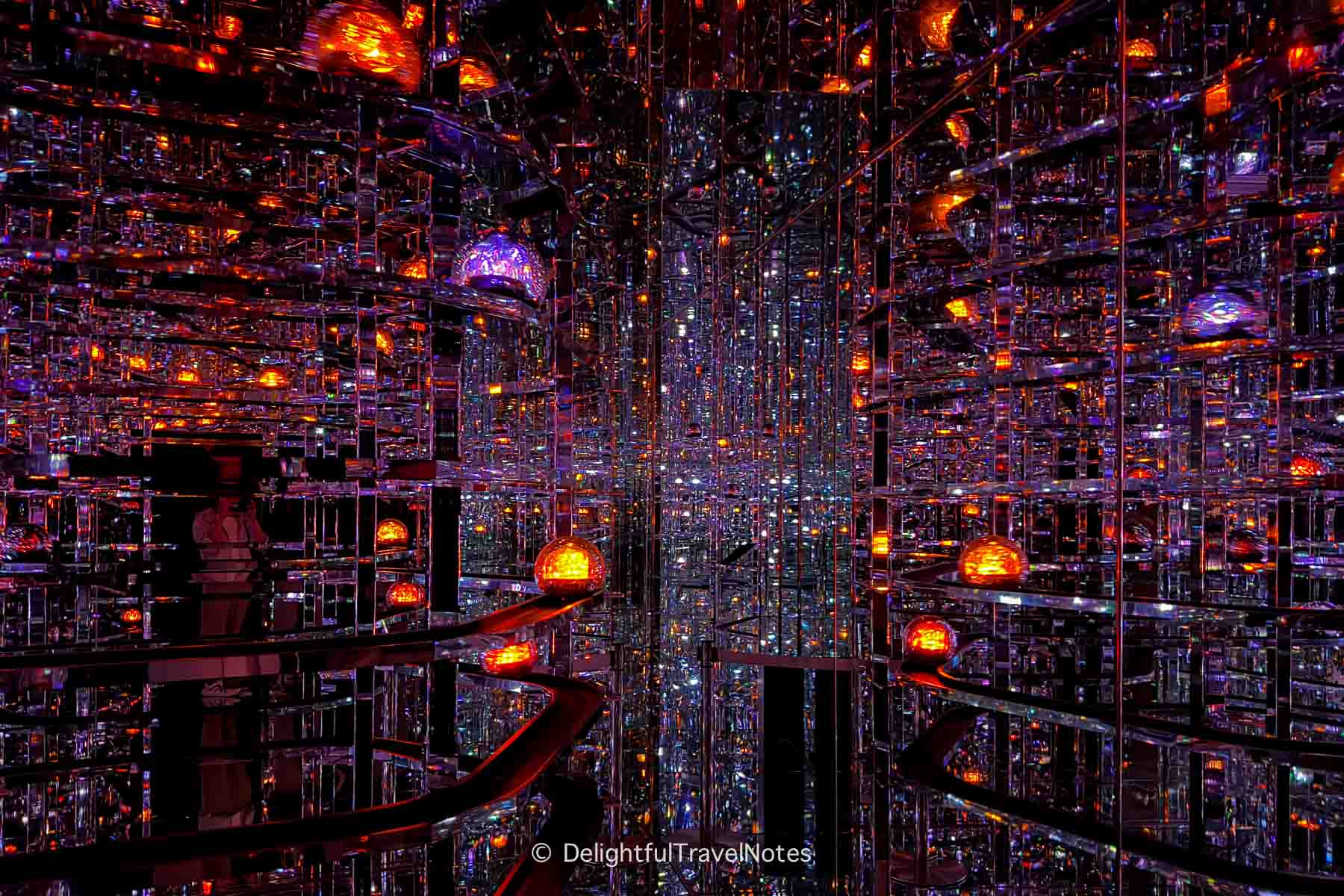
Tickets can be purchased on TeamLab official website or through Klook.com. I highly recommend booking the earliest morning slot (9:00-9:30) to avoid large crowds. We went in winter time (January 2025) and bought our tickets for this time slot just a few days in advance. I’m not sure about ticket availability in busier seasons.
Check Ticket Prices & Availability
Official site Klook.com
You can download the TeamLab app which will provide additional information about the artwork in each room and how you can interact with it. Again, it’s worth noting that some rooms can be unpleasant for those who are sensitive to bright, flashing lights and rapid visual stimuli.

Explore More
Fall Foliage at Eikan-do in Kyoto: Day and Night Illuminations Comparison
Hogon-in Fall Foliage: Beautiful But Not the Best Spot in Kyoto
Spectacular Fall Foliage Viewing at Kiyomizu-dera Despite Heavy Crowds!